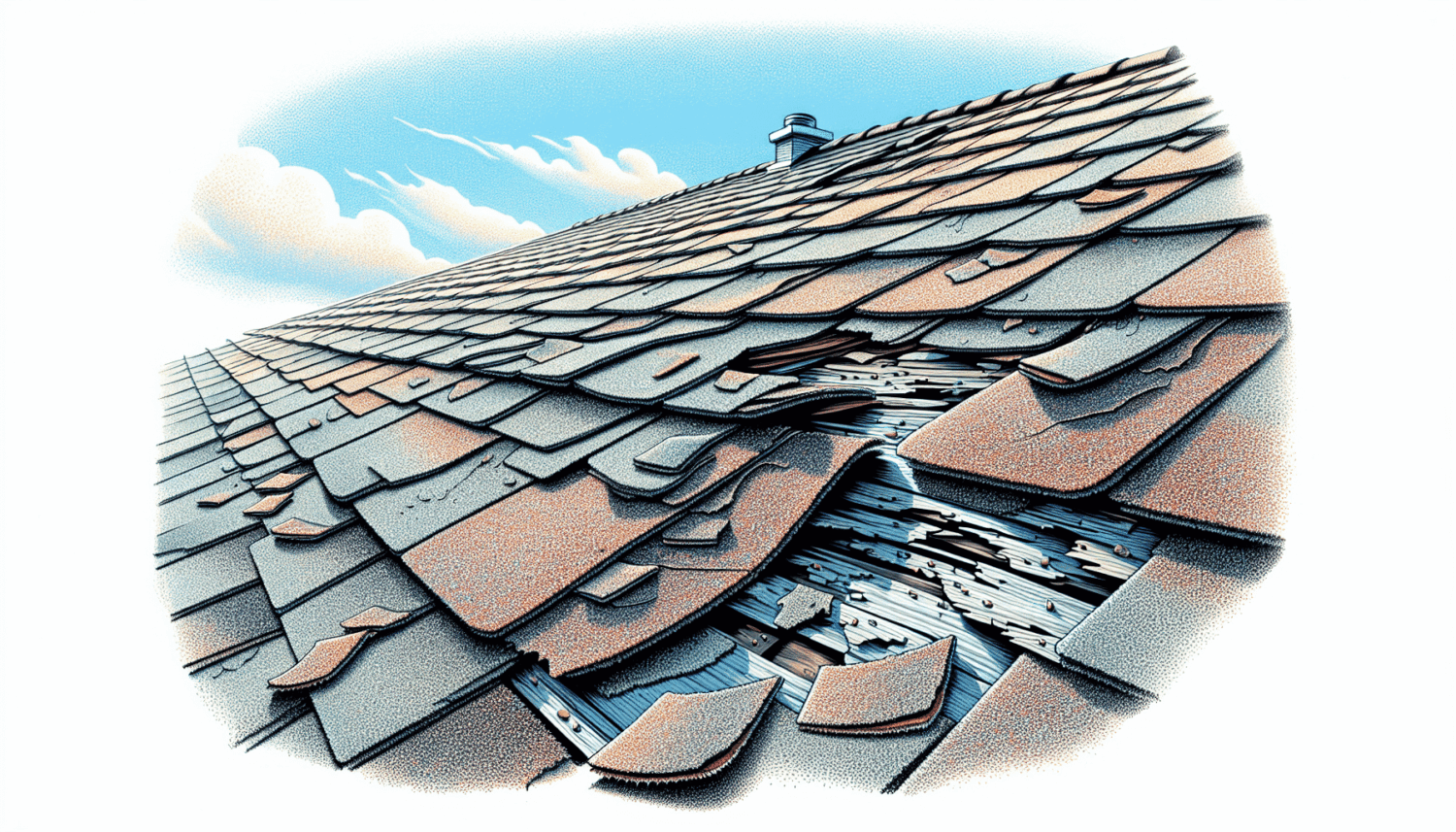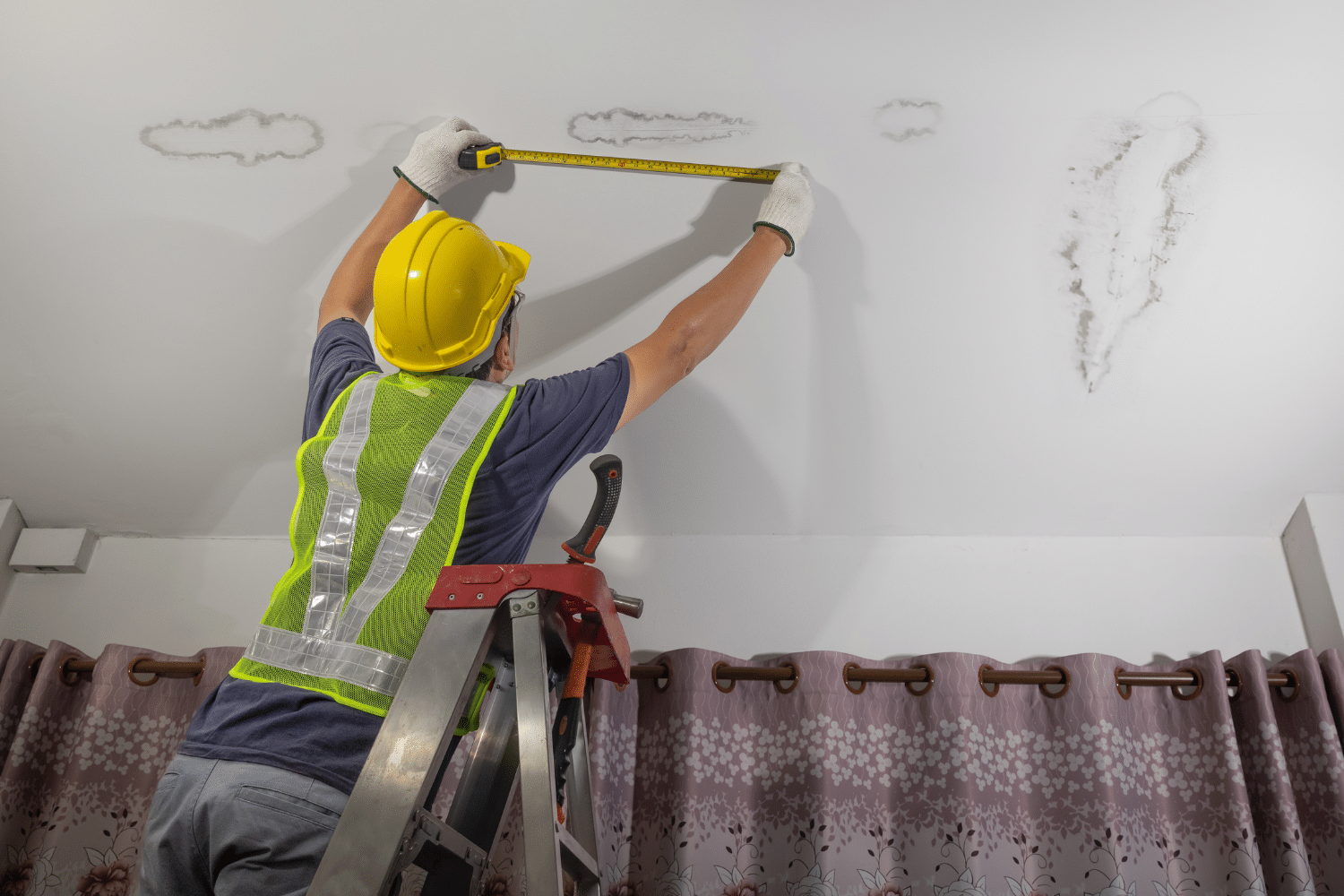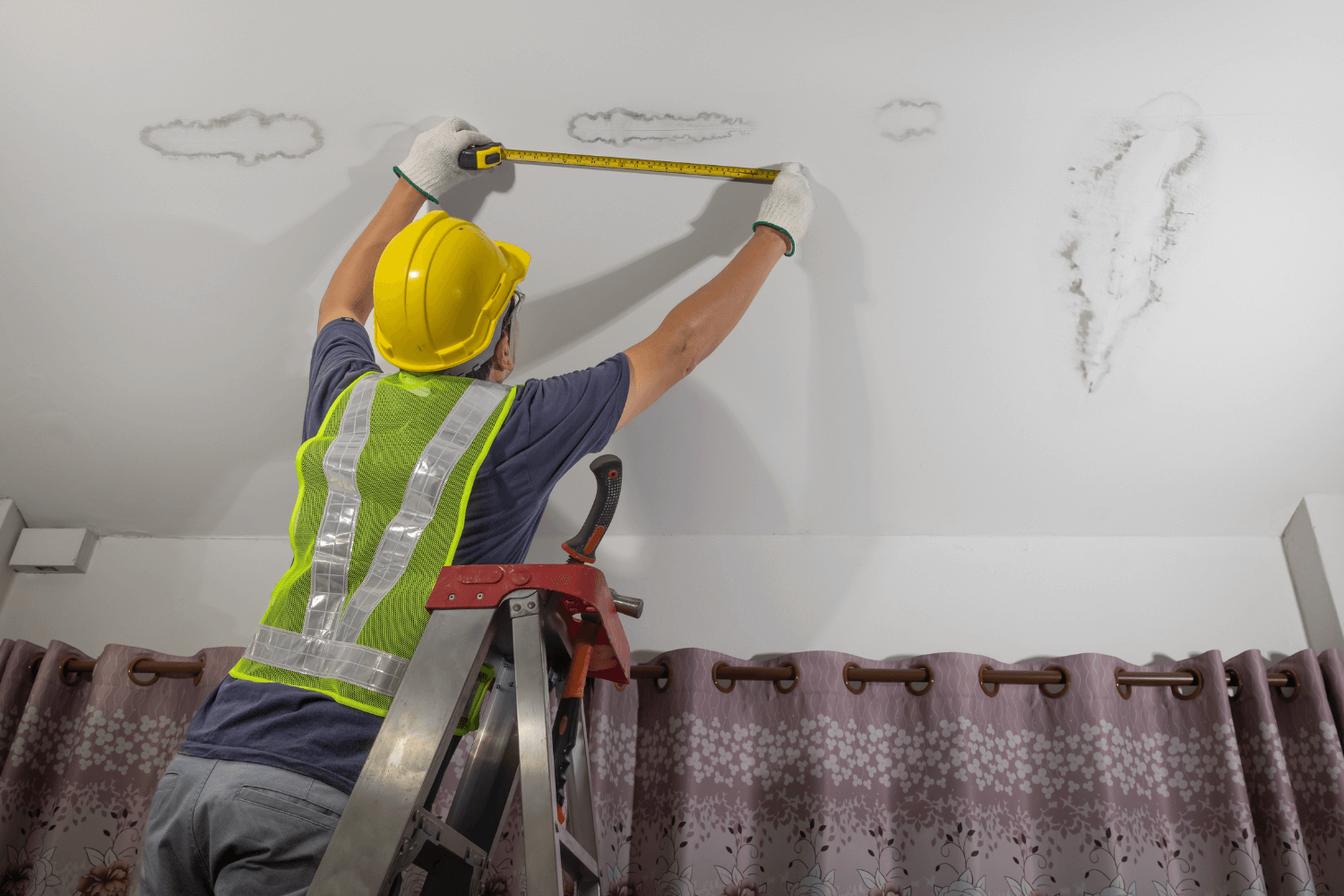Spotting Trouble: 3 Signs That You Need to Replace Your Asphalt Roof
Wondering if it’s time to replace your asphalt roof? You’re not alone. Homeowners often overlook the subtle warning signs until it’s too late, leading to costly damages. This article will guide you through “3 signs that you need to replace your asphalt roof”, so you can take action before minor issues become major problems. Keep an eye out for these critical indicators to maintain your home’s safety and structural integrity.
Key Takeaways
-
Visible symptoms of aging on asphalt shingles, such as granule loss and curling, indicate a need for roofing evaluation and possibly early replacement to prevent damage and maintain structural integrity.
-
Water damage can be identified by signs such as water stains, musty odors, mold growth, and deterioration in the attic, requiring professional assessment to prevent further damage and manage repair costs effectively.
-
A sagging roof signifies serious structural concerns that necessitate urgent professional intervention to repair or replace, ensuring the stability and integrity of the roofing structure.
1. Visible Aging and Wear on Asphalt Shingles

Asphalt shingles are designed to last 20 to 25 years. But what happens when they start showing signs of aging before their time? It’s simple: you need to consider an asphalt roof replacement for your asphalt roofs.
Granule loss is one of the most significant indicators of wear on your asphalt shingles. These granules protect the shingles from environmental factors like weathering and UV radiation. Over time, you might notice missing granules from your shingles, a sign of significant wear that calls for a professional roofing contractor’s evaluation. Additionally, if your shingles are curling, it’s another indication that they may need attention.
But why wait for your asphalt shingles to fail completely before considering a replacement? There are immense benefits to replacing your shingles early. For starters, early replacement helps prevent damage from heavy winds and leaks, safeguarding your home’s structural integrity.
What’s more, early replacement gives you ample time to find the right roofing contractor. This way, you can ensure that your new roof is installed properly, giving your home the protection it deserves.
It’s also worth noting that a sagging roof is a clear sign that your roof needs urgent attention. It could be due to missing shingles or other exterior damage, which could expose your home to the elements and possible structural damage.
A professional roofing contractor will not only replace your aging shingles but also identify and address other potential issues with your roofing systems. So, don’t wait until it’s too late. If the life of your asphalt shingles is nearing its end, consider a roof replacement to maintain your home’s protection.
2. Evidence of Water Damage and Leaks


Water damage and leaks are silent assailants that can wreak havoc on your home. Detecting them early can save you not only from structural damage but also from soaring energy bills.
Your house might be showing signs of water damage and you may not even realize it. Water stains on ceilings or walls, musty odors, and evidence of leaks in the attic like moisture on rafters or deteriorating sheathing are some of the telltale signs of water damage.
External signs of water damage can be just as revealing. Mold and mildew growth, as well as moss growth at the roof-wall intersections, compromised roof vents, and rusted chimney flashing are all indicators of potential roof leaks that need immediate attention.
But how do you detect these leaks? One way is by inspecting for ‘shiners’ in the attic. These are nails that missed the framing member in the attic. On cold nights, warm, moist air can condense on these nails, causing them to drip onto the insulation below.
You can also recreate rainfall by running a hose over your roof to find the leaks. Although it’s a bit more labor-intensive, this method can help you spot leaks that you might otherwise miss, especially in moist climates.
Sometimes, detecting leaks might require removing shingles to inspect the sheathing underneath. But don’t fret; a professional roofing contractor can handle this task without causing further damage to your roof. So, if you notice signs of water damage or leaks, don’t hesitate to contact a professional for a free estimate.
3. Structural Concerns Indicating Urgent Replacement
A sagging roof is not just an eyesore; it’s a ticking time bomb. If you notice that your roof is sagging, it signifies serious structural issues that need to be addressed urgently.
But what causes a roof to sag? The answer lies in the underlying structure of your roof. The use of undersized rafters or improperly constructed roof joists can lead to a compromised roof support, causing it to sag.
Another cause of a sagging roof could be excessive weight from heavy snow or ice. If not addressed promptly, this could lead to extensive structural damage and a hefty repair bill.
Hence, a sagging roof should be taken as a serious problem, and immediate action should be taken to replace or repair it. But remember, this is not a DIY task. To ensure the proper assessment and repair of your roof, you’ll need the help of professional roofing contractors.
Professional roofing contractors like Rapid Roofing:
-
Are equipped with the knowledge and tools to identify and correct complex structural problems
-
Ensure your roof’s integrity
-
Provide a full warranty as a GAF MasterElite contractor
So, if you notice your roof sagging or any other signs of structural damage, don’t hesitate to contact Rapid Roofing. The stability of your roof depends on timely intervention. They provide free estimates and offer fast, prompt delivery and exceptional customer service.
Summary
In conclusion, your home’s roof is its first line of defense against the elements. Regular inspections and maintenance can help identify issues like visible aging and wear on asphalt shingles, evidence of water damage and leaks, and structural concerns indicating the need for urgent replacement. Remember, the cost of not addressing these issues promptly far outweighs the cost of hiring professional roofing contractors like Rapid Roofing. So, don’t wait for disaster to strike. Take proactive steps to ensure the longevity of your roof.
Frequently Asked Questions
How do you know it’s time to replace your roof?
You may need to replace your roof if you notice deteriorating shingles, curled and buckled shingles, roof discoloration, or missing shingles. Additionally, consider the age of your roof and look for signs such as rusted roof valleys, gaps in chimney flashing, daylight through roof boards, and sagging or moss.
What is the life expectancy of an asphalt roof?
The life expectancy of an asphalt roof typically ranges between 15 and 30 years, depending on factors like weather conditions, climate, and the type of asphalt shingle used. Different shingle types have varying longevity, with three-tab shingles lasting 15 to 20 years and architectural (dimensional) shingles lasting 20 to 30 years.
How do I know when my asphalt shingles need replacing?
You should consider replacing your asphalt shingles if you notice bald spots where granules are missing, cracked shingles, dark streaks, or moss growth on your roof. Additionally, if your roof is over 20 years old or looks old and worn, it may be time for a replacement.
How can I detect water damage and leaks in my home?
You can detect water damage and leaks in your home by looking for water stains, musty odors, and evidence of leaks. Finding these signs can help you address the issue promptly and prevent further damage.
What causes a roof to sag?
A sagging roof can be caused by undersized rafters, improperly constructed roof joists, or excessive weight from heavy snow or ice. It’s important to address these issues promptly to prevent further damage.


 Residential Roofing
Residential Roofing Storm Damage
Storm Damage Multi-Family Homes
Multi-Family Homes
